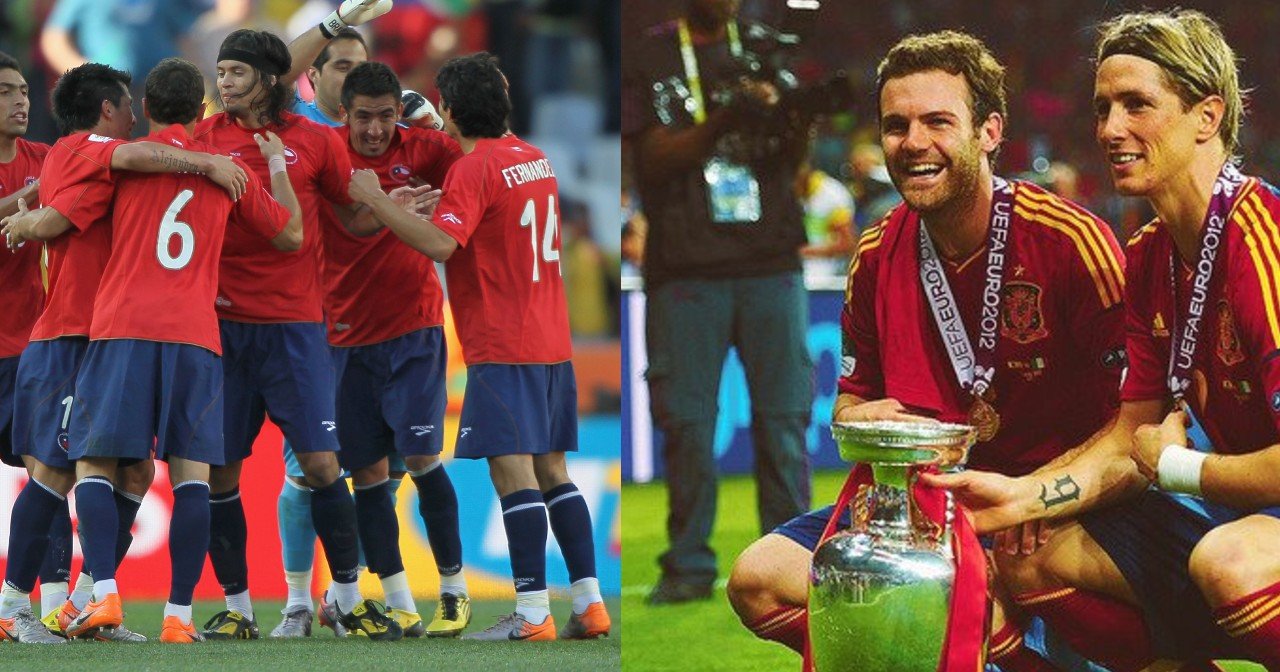
The formations that we see these days being deployed in pursuit of excellence on the football pitch are an upshot of various experiments which have been tried and tested over prolonged years of the game. Success did not arrive in a day or two for all of these formations. It took time and patience.
When football started, there was nothing called formation. Twenty two players used to chase behind the same ball, rumble in the mud of grass, whatever seemed to be present and somehow grapple the ball beyond the line. Slowly with time, preceptors and captains released that the game can be played in a better way only if one can shape the team in various shape and size on the pitch.
Initial results were astonishing for the ones who tried assorting their team in various formations and this started being followed. The deployment of formations disseminated like an ague across the globe and the world invented a new brand of the game which they were completely oblivious to.
In the early days of footballing antiquity, the emphasis in formations used to lie in the attacking forces of the teams as the strategies and shapes mainly used to revolve around 2-2-2-4 or 3-1-1-5 at the most. Anything close to these lines in the modern days would seem to be absolutely ridiculous, however, these are the formations that impressed the forefathers of the game in the initial days.
With time, things started changing and coaches realized that the game must pervade its salience to every single department on the field and the focus shifted from attacks to defence.
We will be looking at seven crazy formations in modern football that changed the conception of the world, once and for all and also the artists who amplified these insane formations.
1. Ajax (1994/95): 3-3-1-3
In 1995, Louis Van Gaal stunned the world with his extraordinary tactics and his unwavering faith in his homegrown flair. That was the season that saw the establishment of Van Gaal as a tactical thinktank that witnessed the unbeaten run of Ajax in the Dutch League.
The tactical genius deployed an unthinkable formation that came in the apparition of 3-3-1-3 and this formation stayed throughout the season irrespective of any substitutions or injuries.
Frank de Boer, Danny Blind and Michael Reiziger marshalled the defensive forces which were flanked by the defensive midfielder, Frank Rijkaard. The attacking midfield comprised the triptych of Edgar Davids, Ronald de Boer and Clarence Seedorf. Van Gaal had the luxury of the deadly withdrawal striker, Jari Litmanen who roamed the attacking third, being deployed in a free role, just behind the attacking trio of Finidi George, Marc Overmars and Patrick Kluivert.
Despite failing to make it big at Manchester United, Van Gaal validated his tactical genius on the field in his tenure as the Ajax manager.
2. Australia (2006): 3-6-1
The midfield of the game is an extremely crucial part that leverages the upshot and the complexion in a heartbeat. Under the chaperonage of another Dutch genius, Guus Hiddink, Australia managed to finally squeeze themselves through the echelons of the World Cup since 1974 and the tactics used to establish this herculean feat was a crazy formation that read 3-6-1.
Emphasis on the midfield helped Australia maintain their tactical elasticity and that made life a lot easier for the Australian players on the wings who were able to bomb down before whipping in the final cross.
The marauding Mark Viduka was the solitary striker up front who in turn was flanked by the troika of attacking midfielders comprising the likes of Tim Cahill, Harry Kewell, and Jason Culina. The focus on midfield made Australia play possessional football which was a rare spectacle in the Yellow colours. Their possessional stats read 55%, 56%, and 58% against Japan, Croatia, and Italy respectively, and even against a technically overcooked Brazil, they managed to retain 47 percent of the ball.
Australia managed to reach the knock-out stages of the tournament and in doing so, established the fact that 3-6-1 is an extremely effective formation.
3. Barcelona (2009): 4-2-4
The arrival of Pep Guardiola at Camp Nou heralded the oncoming of an unparalleled era at the shrine of the Catalan football firebrands while the world was simply gearing up to witness an unprecedented brand of football.
Despite the predominance of 4-3-3 in his game, Guardiola occasionally used to switch the formation to a rare 4-2-4 which was labelled as freak, considering the massive imbalance sparked in the midfield.
Any team that was technically undercooked could have very well bitten the dust but Barcelona under the reins of Guardiola was a giant in the making. With luxurious attacking options like Thierry Henry, Lionel Messi and Pedro Rodriguez shuffling their position as a main striker frequently, Barcelona managed to lay their claim on the La Liga trophy, UEFA Super Cup, Supercopa De Espana and the Club World Cup.
The midfield duties were entrusted with Yaya Toure and Sergio Busquets who played as a sublime bridge between the impenetrable defence and the million-dollar attacking force.
4. Spain (2012): 4-6-0
The Spain that emerged under the tutelage of Vicente Del Bosque was nothing short of immaculate. The gentry of football that was up for grabs was breathtaking to say the least and the precision of passes and positional perfection was a beauty for the eyes.
Ideally, the false nine is a formation that has been popularized by Brazil but it was painted with the livery of perfection by Spain. Cesc Fabregas was the main architect of this extremely difficult formation and the way he crafted the chances, wriggling himself through the centre was nothing short of phenomenal.
One of the major reasons why this formation was a grand success for Spain is because of the Tiki-Taka football that was ingrained with picture-perfect precision in them.
5. Bayern Munich (2013/14): 3-4-3
Pep Guardiola has always been a mastermind at whichever club he has been. One of the most notable traits of his footballing genius is his transitional ability at various clubs, keeping in mind the quality of football that the club can offer.
Guardiola deployed an extremely attacking system at the Allianz Arena after carefully assessing his resources. Guardiola made very minimal changes to the system that was deployed by Jupp Heynckes and the ironing f the kinks worked out wonders for him.
In order to plug the void that was sparked by the injuries of Bastian Schweinsteiger and Javi Martinez, Pep made an extremely astute use of Philippe Lahm and converted him into a low-lying midfielder.
Lahm’s transformation started bearing handsome dividends for Bayern and the entire team dovetailed into an untenable unit who went on to wreak absolute chaos in the Bundesliga, clinching the title by an exhilarating 19-points gap between them and their pursuers.
6. Chile (2010): 3-3-1-3
Despite this formation being nailed to perfection by Van Gaal, the madman, Marcelo Biesla used it to optimum effect that saw him establishing Chile as a reckoning force in the footballing world.
He had four players who were ingrained with a defensive mindset and was consorted with the deep-lying midfielders and a holding midfielder. The system announced the arrival of Arturo Vidal and Alexis Sanchez to the world and the duo went hacking through the opposition defences like a canon-ball razing its way through skittles.
Under this bold and eccentric formation, Chile managed to reach the round-of-16 but bowed out to a superior Brazil in the tournament.
7. France (1984): 4-2-2-2
This is the fabled story of France’s ‘Magic Square’ formation which is deemed as one of the greatest midfields of the world. Preceptor Michel Hidalgo built together a midfield that comprised muscle, creativity and precision. This entire midfield was built on the quartet of Jean Tigana, Alain Giresse, Luis Fernandez and Michel Platini.
As Fernandez was deployed as the holding midfielder, Tigrana, Giresse and Platini were allocated free roles to cut through the opposition defences like a knife in the butter.
Working as a well-oiled unit, the quartet ripped through the hearts of the opposition defence as Platini spearheaded the movement to blast in nine goals from five games that saw France coming up trumps in the European contention.




